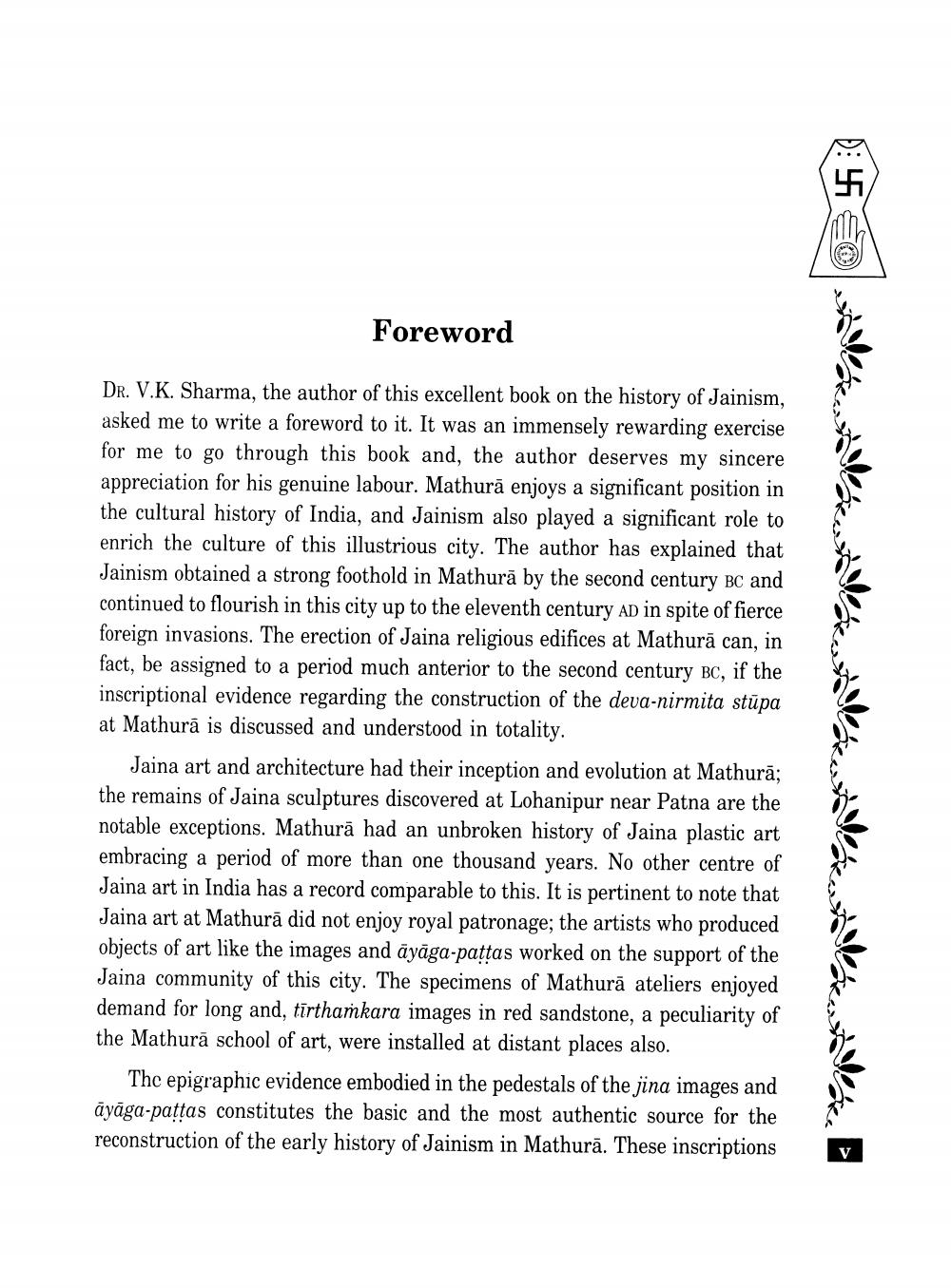________________
Foreword
DR. V.K. Sharma, the author of this excellent book on the history of Jainism, asked me to write a foreword to it. It was an immensely rewarding exercise for me to go through this book and, the author deserves my sincere appreciation for his genuine labour. Mathura enjoys a significant position in the cultural history of India, and Jainism also played a significant role to enrich the culture of this illustrious city. The author has explained that Jainism obtained a strong foothold in Mathura by the second century BC and continued to flourish in this city up to the eleventh century AD in spite of fierce foreign invasions. The erection of Jaina religious edifices at Mathura can, in fact, be assigned to a period much anterior to the second century BC, if the inscriptional evidence regarding the construction of the deva-nirmita stūpa at Mathura is discussed and understood in totality.
Jaina art and architecture had their inception and evolution at Mathurā; the remains of Jaina sculptures discovered at Lohanipur near Patna are the notable exceptions. Mathura had an unbroken history of Jaina plastic art embracing a period of more than one thousand years. No other centre of Jaina art in India has a record comparable to this. It is pertinent to note that Jaina art at Mathura did not enjoy royal patronage; the artists who produced objects of art like the images and ayaga-paṭṭas worked on the support of the Jaina community of this city. The specimens of Mathura ateliers enjoyed demand for long and, tirthamkara images in red sandstone, a peculiarity of the Mathura school of art, were installed at distant places also.
The epigraphic evidence embodied in the pedestals of the jina images and ayaga-paṭṭas constitutes the basic and the most authentic source for the reconstruction of the early history of Jainism in Mathura. These inscriptions
47
V




